Inside America’s Covid-reporting breakdown

There were too many cases to count.
Covid-19 was spreading rapidly throughout the United States, as cold winter weather began to drive people indoors, but the Centers for Disease Control and Prevention was flying blind: The state agencies that it relied on were way behind in their tracking, with numbers trickling in from labs by fax or even snail mail.
In Oklahoma, Dr. Jared Taylor, Oklahoma’s lead state epidemiologist, couldn’t see the full picture.
Inside the state health department in Oklahoma City, staffers shuffled through piles of paper they’d pulled out of fax machines and sorted through hundreds of secure emails to upload Covid-19 lab results manually to the state’s digital dashboard — a system that often malfunctioned. Other employees desperately tried to work with labs — many of whom had not worked with the state previously — to walk them through the process of sending results electronically.
When the data came in, state employees routinely found errors — instances where a person was counted twice or two people with the same name were identified as a single patient.
Meanwhile, in an old shopping mall on the other side of town, hundreds of volunteers sat at desks with telephones and checklists. Their goal: contact as many infected people as possible. But they couldn’t keep up. From the end of September to the end of December, individuals with Covid-19 monitored by the Oklahoma health department decreased by 65 percent while the number of positive cases increased by 205 percent, according to the findings of a state investigation.
“We had a homegrown, customized system for disease investigation that was not amenable to the case volume that we saw,” Taylor acknowledged. “We were just running in so many directions.”
In April, Taylor reported that his department had found 1,300 positive cases that had fallen into the “abyss.” Three weeks later, Taylor stepped aside. He’s currently serving in the state agency in an advisory capacity.
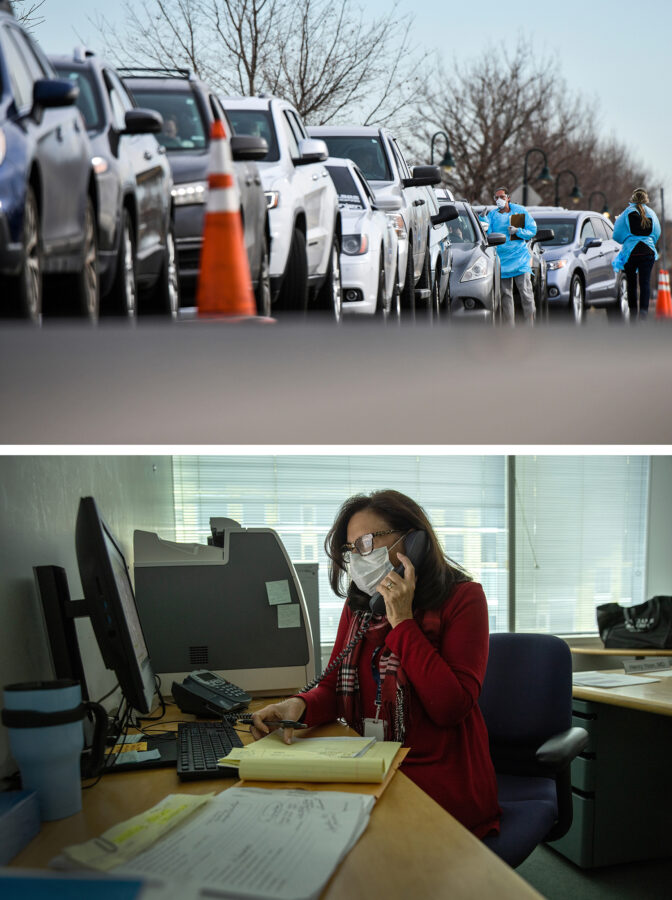
Oklahoma’s struggle is America’s. The CDC relies on states to identify and monitor viral outbreaks that, if uncontrolled, can kill thousands of people. But the coronavirus exposed a patchwork system in which state officials struggled to control the spread of Covid-19 because their outdated surveillance systems did not allow them to collect and analyze data in real-time, according to a six-month POLITICO investigation that included interviews with four dozen health officials in 25 states and more than a dozen current and former officials at the CDC and other federal health agencies.
Covid-19 revealed this cobbled-together system’s inability to accurately detect when and where the virus was spreading so public health officials could intervene. Those fissures now loom even larger as the Delta variant makes the quick identification of outbreaks and clusters even more crucial to containing the virus.
A sense of surrender was common throughout the pandemic. Faced with underfunded and understaffed health departments, many state officials said they were not able to adequately identify and contain outbreaks during surge periods. At many junctures, states had no choice but to ask Covid-positive individuals to conduct their own contact tracing.
As public health officials saw it, the task of safeguarding their communities from Covid-19 was like jumping out of an airplane with a parachute peppered with holes. Officials were forced to try to patch their parachute while in free fall. Some found a way to the ground. Others did not.
On a national level, the delays in receiving lab reports and broken chains of transmission impeded the federal government’s understanding of Covid-19’s spread throughout the country. In one of the most dramatic examples, during the deadly explosion of cases last winter, some states took weeks to gather and report their data, skewing the national Covid-19 picture. It was the holidays. Many health workers took vacations. The federal government was hit by the dual problem of vacations and officials rushing to get new jobs between administrations. Backlogs built up.
Where Covid-19 reporting falls short
A review by POLITICO reveals significant gaps in Covid-19 lab reporting and outbreak investigations that allowed the virus to spread.
In January 2021 — the deadliest month of the pandemic — states were more than five weeks behind in submitting mortality data to the CDC, three senior federal officials told POLITICO. Under a deluge of new infections, states were three weeks behind in investigating Covid-19 cases, more than a dozen state health officials said.
The same problems may be even more threatening in the next act of the Covid drama.
“We can’t just assume that what we learned last fall … is going to also apply now,” said Dr. Jonathan Quick, a pandemic expert at the Rockefeller Foundation. “When you get [a variant] that’s more contagious and it’s spreading in the different age groups … you’ve got to increase your testing and make sure that you’re sequencing. We really need to message differently … because we know we’ve got a different enemy.”
But interviews with officials in more than two dozen states revealed that few felt prepared to meet the next round of challenges. Among POLITICO’s findings:
— There was widespread awareness that state health departments lacked sufficient funding and up-to-date technology, but the federal government continued to rely on state public-health systems to report positive and negative cases and Covid-19 deaths. Despite the clear limitations of the data systems, local and state health officials were largely left to fend for themselves.
— Within the states, dozens of health departments relied on arcane programs, many of which used different technology, to collect case information, investigate cases and contain outbreaks in settings such as businesses, prisons and nursing homes. The systems did not communicate with each other, which made it difficult for health officials to visualize where the virus was spreading and translate that information to the public in real-time.
— The influx of people getting tested quickly overwhelmed even the biggest and most well-funded labs, causing delays — sometimes by more than a week — in results being reported to the health department, a time lag that upended contact tracing and containment efforts.
— Labs in almost every state did not send electronic data to state officials, who in turn reported to the federal government. Instead, labs reported through a hodgepodge of outdated methods, including faxes, emails and even the U.S. Postal Service. It could take state health officials more than two weeks to receive and manually input lab data, delaying case investigations.
— During Covid-19 surges, health departments in more than 10 states stopped conducting case interviews and issuing quarantine orders for people in close contact with Covid-19 patients because there were simply too many cases to handle.
Federal officials said they were alarmed by what they saw in the states, as discreet outbreaks quickly mushroomed into full-blown crises with scores of deaths.
“If state and local health departments had the information they needed in a more timely way and accessible to them in their systems, they could have intervened more quickly . . . in a nursing home or meatpacking plant,” said Dr. Paula Yoon, the director of the CDC’s division of health informatics and surveillance. “They could have intervened faster knowing what was going on or even in terms of community spread in a more timely way.”
In a statement to POLITICO, CDC Director Rochelle Walensky acknowledged that the country’s “public health infrastructure has been neglected for a long time.”
“America depends on public health data that are both fast and right,” Walensky said. “To understand what is happening nationally, we first must have rich information locally, which is why CDC and our partners are implementing solutions that speed the flow of accurate health data.”
For decades, scientists warned that a pandemic would one day wreak havoc on global populations, potentially killing hundreds of thousands of people. The global health community needed to prepare, these scientists said.
In a medical journal published in 1988, Joshua Lederberg, the Nobel prize winner in physiology and medicine in 1958 and president of The Rockefeller University, wrote that after the emergence of AIDS, the world “will face similar catastrophes again.”
“We have too many illusions that we can, by writ, govern the remaining vital kingdoms, the microbes, that remain our competitors of last resort for dominion of the planet,” Lederberg wrote. “The bacteria and viruses know nothing of national sovereignties.”
Since then, outbreaks have come at almost regular intervals: Severe Acute Respiratory Syndrome (SARS) in 2003; the swine flu, also known as H1N1, in 2009; the Middle East Respiratory Syndrome (MERS) in 2012; and Ebola in 2014. With each came renewed demands from public-health leaders to implement surveillance systems that could help contain disease and save more lives.
Despite those pleas, the United States did not commit the funding or organizational resources necessary to fight a pandemic like Covid-19.
In interviews, current and former health officials in dozens of states attributed their struggles to decades of underfunding on both the federal and state level. And, they said, despite repeatedly asking the federal government for additional resources to improve their data systems to prepare for an infectious disease epidemic, public health departments were largely left to fend for themselves.
Tom Frieden, the director of the CDC under President Barack Obama, acknowledged the failings at a hearing before the House Energy and Commerce Committee in March: “Our nation had a patchwork of underfunded, understaffed, poorly coordinated health departments and decades out-of-date data systems — none of which were equipped to handle a modern-day public health crisis.”
Since the 2008 recession, more than 35,000 state and local public healthcare jobs have vanished, according to data from the National Association of County and City Health Officials. In 2009 alone, 45 percent of local health departments reported having cut their budgets, according to the same data. In Oklahoma, where Taylor and his team scrambled to fix Covid-19 data errors, the state legislature cut its health budget by 27 percent between 2009 and 2018.
Health budgets in some places recovered slightly after the recession, during which states were forced to balance their budgets despite massive shortfalls in tax revenues. And over the last two decades, Congress has allocated billions of dollars to help states prepare for major public health threats. But local and state officials said not enough of the federal funding went specifically to the improvement of the country’s surveillance systems and the data programs that run them. As a result, public health departments have fallen further and further behind.
Still, it was more than a lack of funding that hampered data collection, many officials acknowledged. Over the years, some health departments struggled with the need for transformation. Local offices pushed back against moving away from systems and processes they relied upon. Some bucked the idea of digitizing records.
In 2013, top CDC officials concluded the agency needed a better strategy for strengthening the country’s surveillance systems. One of the main components was to modernize the National Notifiable Diseases Surveillance System (NEDSS) — the agency’s national surveillance system that states use to report disease data to the federal government.
The agency began working on finding ways to create new IT infrastructure and standards. In the summer of 2013, only 62 percent of 20 million laboratory reports were being received electronically. The new five-year strategy called for increasing that number to 90 percent.
The CDC used tens of millions of dollars allocated through the Affordable Care Act and congressional funding to help states across the country improve their electronic reporting and data systems over the next several years, and by 2019, about 85 percent of the nation’s labs were reporting electronically.
Frieden created an entire epidemiology and surveillance unit to strengthen surveillance at the agency and around the country. The CDC also created a program called DCIPHER during the Ebola outbreak that allowed the agency, states and other federal partners to share vital epidemiological data more easily.
But local officials said federal interest in continuing to rebuild the nation’s capacity to surveil and report diseases eventually waned. Federal officials were increasingly of the belief that pandemics were not a top national security threat.
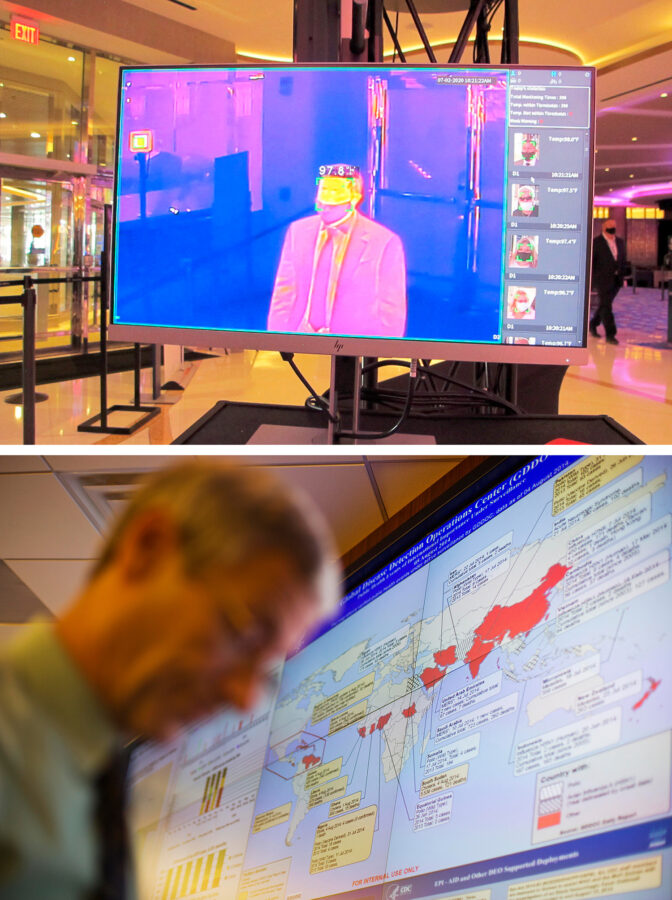
After the Ebola outbreak of 2013 to 2016, the Obama administration developed a pandemic response playbook and embedded a team in the National Security Council. But President Donald Trump disbanded the NSC team, folding some of the positions within the directorate of global health security and biodefense into other departments.
When Covid-19 emerged in January of 2020, health officials said they knew they were in trouble. Almost every state epidemiologist who spoke to POLITICO said they ran mock Covid-19 crisis tests that revealed the state public health surveillance systems would likely struggle to function under an influx of cases.
And they did.
In Alabama, during surges, data systems crashed from an influx of cases hitting the system. In Vermont, more than 1,300 of Covid-19 lab results in December 2020 were received through fax, email or snail mail — not through the state’s electronic reporting system. In Washington state, labs were up to 10 days late reporting Covid-19 results during peak periods. In Wyoming, the state health department had to “deduplicate” thousands of records in its electronic system each month to ensure positive results were counted just once.
Every obstacle faced by public officials on the local level — every late lab result, every delayed isolation of a Covid patient, every time the case surveillance system shut down — impeded the national response to Covid-19. And if a state’s positivity rate was skewed, it changed the perception of the national picture for officials and scientists at the CDC.
For Dr. Scott Lindquist, the top epidemiologist in Washington State, the slapstick efforts to collect Covid-19 data were the sad result of the flawed ways the U.S. approaches public health.
“It was pretty obvious that you will always be behind in a [health emergency] response if you don’t have the tools and if those tools are not modernized and capable of being able to respond appropriately. And that’s what’s happened with Covid, unfortunately,” Lindquist said. “My biggest worry right now is that while we’ve all been talking about this as a transformational moment for public health … Americans are very good at siloing or forgetting. And very quickly, we’re going to be on to the next thing.”
From the early reports of Covid-19 in January 2020, epidemiologists, virologists and state officials said they knew they would face major obstacles in trying to track the virus, contain outbreaks and prevent more people from contracting the deadly virus.
Health departments for years had fought infectious diseases by examining lab results, contact tracing, opening outbreak investigations and isolating those who were sick. But no one had done so under pandemic conditions. In most states, each of those functions was handled separately, sometimes by different people, often with data systems that didn’t intersect with each other.
Picture the entire apparatus to track infectious diseases as a human body. One program acts like the brain, albeit a deficient one. It consumes lab results that include basic demographic information and creates patient records, but it can’t always detect whether someone already exists in the system. It also cannot process non-electronic lab results. Health officials must manually enter such data into the system themselves.
For many states, that system does not have control over the body’s limbs — the programs used to manage the spread of disease. The brain system can’t always tell the limbs how to accurately use the available information to complete tasks such as adding to an open case investigation or probing an outbreak.
One of the limbs — the system designed for case management — requires individual health officials to interview patients about when their symptoms began and who they met before and after testing. Officials often have to manually enter the information into the database.
Most state public health agencies also use a separate program — the other limb — to track outbreaks in congregate settings like prisons and nursing homes. Many of those systems, too, rely heavily on spreadsheets and manual data entry.
While some states said their programs performed relatively well under pressure — for example, during massive spikes in infection rates — dozens of public health agencies in states such as Oklahoma, Wyoming, Alabama and New Mexico said their data systems were outdated, slow and crashed when they received too many lab results at once. And that impacted health departments’ ability to report timely and precise information to the CDC.
“I’m confident we have tracked the trends in New Mexico effectively,” New Mexico’s lead epidemiologist Chad Smelser said. “But I wouldn’t be able to tell you we have 100 percent complete data.”
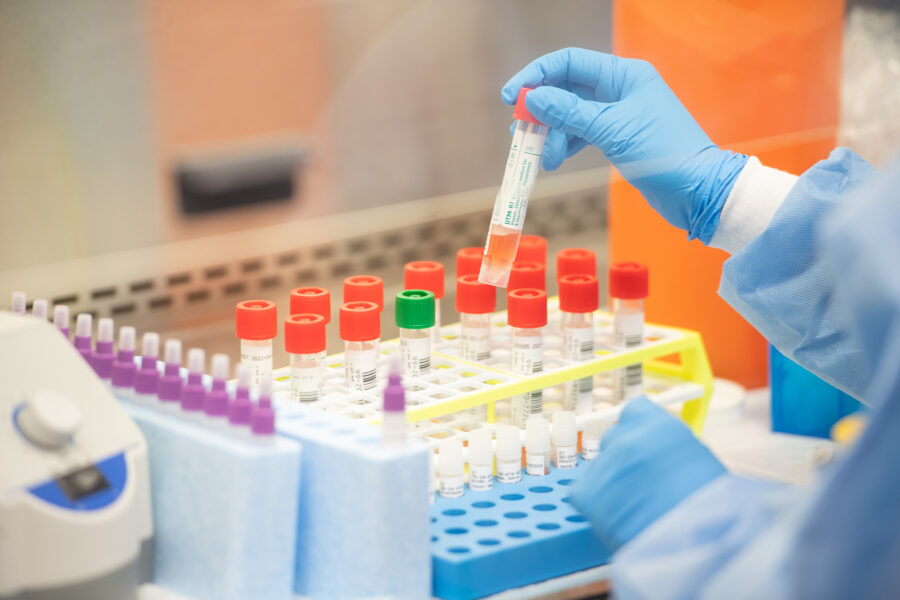
Because the systems do not always sync with one another, it was difficult to track Covid-positive individuals from their initial lab results, as they traveled through communities and then potentially to a hospital or long-term care facility.
“What we’re looking for, and trying to improve upon, is the data collection and the efficiency — the ability to more quickly follow people through the system instead of having separate systems that you kind of have to try to combine to get a good answer,” said Clay Van Houten, Wyoming’s infectious disease epidemiology unit manager.
Monica Rogers, division chief of data & technology of the Tulsa, Oklahoma public health department put it this way: “Our state’s reportable disease database . . . was a legacy system that was not scalable to this kind of disease investigation and response. There have been noted times . . . where the system would fail when they were trying to do an upload of cases.”
With small numbers, the epidemiological surveillance process is manageable, health officials said. But with Covid-19, it was unruly. In Washington state, health officials went from tracking 30,000 disease lab reports a month in 2019 to 30,000 a day during certain points in 2020. In Vermont, the state health agency received 182 times more lab results in December 2020 compared to January 2020.
Covid-19’s ability to spread rapidly in the U.S., infecting dozens and then hundreds and then thousands and thousands of people per week, overwhelmed even the most well-funded and well-staffed public health departments, those in affluent states such as Washington, Oregon and New York.
“In the pandemic, it was about 10 days for our lab test results to come in from the time of the specimen being collected. If you cut it down by two or three days or half a week, that’s a significant increase. But it still means that there’s still lag times that are within the system,” Washington’s Lindquist said.
At CDC headquarters in Atlanta, officials soon began to see delays in reporting and gaps in data collection. The numbers were all over the place. Some states reported statistics with big gaps because certain counties or cities had failed to report their full results. Another immediate issue was that health care providers and hospitals were either taking too long to report to the state health departments or were not reporting at all.
In the summer of 2020, the CDC was forced to implement a supplemental program to scrape state and local public health department websites to get an aggregate count of Covid-19 cases and death counts, Yoon told POLITICO.
“We’ve been asked to provide real-time daily data on the status of cases down to zip code, and you have to track race, ethnicity, age groups, tribal affiliations, incarcerated versus not incarcerated, hospitalized and deceased,” New Mexico’s Smelser said, referring to demands from the CDC. “When you do not do that in a standardized fashion, it is incredibly difficult to do in real-time. It is essentially impossible.”
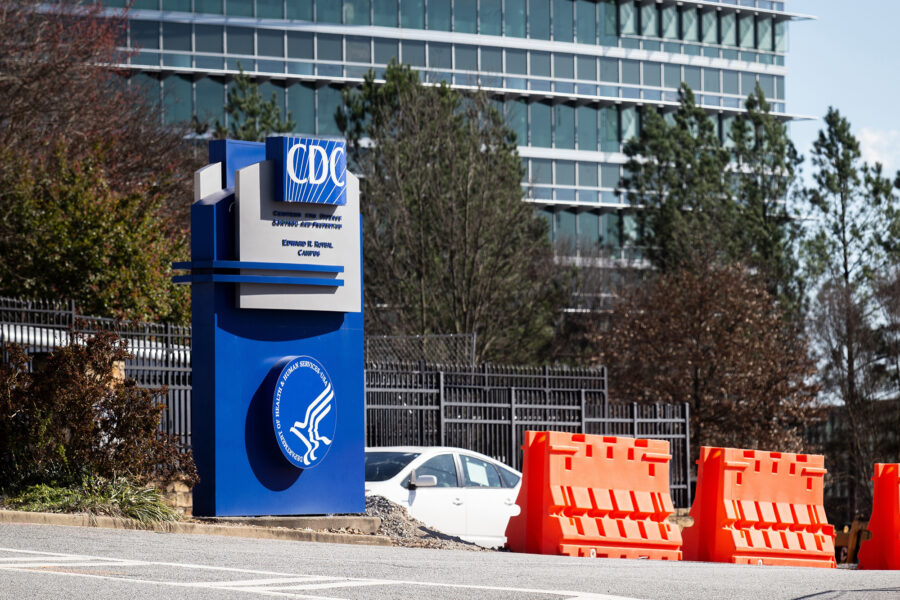
The data systems were particularly strained because the CDC mandated in the spring of 2020 that all local public health departments collect, track and report both positive and negative Covid-19 results. The negative results helped officials calculate percent positivity or the level of community transmission. But it represented a massive additional burden to departments long accustomed to collecting only positive results.
“In a lot of other diseases, you just need to know when somebody is positive,” Lindquist, the top epidemiologist in Washington state, said. “In this case, you actually want to know when people are negative. We are handling volumes that we have not had to handle previously for that reason. And so even if the data systems over time are okay, when you get into a pandemic, then we just don’t have the ability to handle as much volume.”
Some state public health officials scrambled to create new systems. Others moved to supplement their existing systems by relying on Excel spreadsheets to track data like laboratory results. The stitched-together systems made it nearly impossible for health officials to understand the full scope of the pandemic, particularly in surge periods.
Dr. Deborah Birx, the former coordinator for the White House Covid-19 task force under the Trump administration, as well as senior officials at the Department of Health and Human Services, pushed the CDC to find alternative ways to close the gaps in information, particularly hospital data. Ultimately, the Trump administration tried to go around the CDC to improve data collections.
The main result was the HHS Protect data platform, an initiative by officials in the top ranks of the department, including Secretary Alex Azar. In addition to hospitals submitting their data directly to the CDC, the HHS Protect system forced them to manually submit their data to TeleTracking, a private contractor. CDC officials complained that they were cut out of the reporting process and therefore could not ensure the data was accurate.
Meanwhile, the CDC sent several experts out across the country to work with health departments to improve data systems and organize surveillance processes.
But it wasn’t enough.
“Because we did not have the kind of centralized intelligence to identify, test for and execute rapid containment, the U.S. missed our opportunity to contain the virus,” concluded Charity Dean, California’s former assistant director of the Department of Public Health. Dean said even her former office — one of the best-funded state health departments in the country — had a difficult time investigating every Covid-19 positive patient.
On top of the structural flaws in the data systems and their lack of interoperability, public health agencies were receiving Covid-19 lab reports through fax, secure email and snail mail. In interviews with officials from dozens of public health agencies, all of them said at least some percentage of their Covid-19 lab results did not come in electronically.
At the beginning of the pandemic, 85 percent of the nation’s laboratories were electronic, though that percentage varied from state to state, Yoon said. For example, Wyoming’s health department said only 75 percent of the state’s labs were reporting electronically. But those numbers quickly fell off, sometimes dramatically, as more labs — sometimes including small mobile labs — opened up for Covid testing.
Health officials described a chaotic year filled with 15- and 18-hour days in which workers — many of them volunteers from other parts of the health department — were forced to work next to fax machines, pulling hundreds of sheets of paper out of the rickety systems only to have to rush back to their desks, open a spreadsheet, and type in the information. The same officials also had to print out emailed lab results and either repeat the manual entry process or copy and paste the information into the spreadsheet.
And then there was snail mail. Officials constantly had to check postal rooms to see if anyone had sent results through the mail. Some labs did, and they often sent them in weekly or in biweekly batches.
Dozens of public health departments said the new labs brought in to help handle Covid testing did not have the ability to report electronically. Some tried to implement HL7 messaging, a specific kind of electronic reporting. But often the labs struggled or failed because they had never used the HL7 program before. Some labs failed to attach crucial demographic data.
“We knew this well before the pandemic — that the bane of our existence was the fact that it takes a long time for people to report the effects [of diseases] and any kind of manual entry is going to slow the process down,” said Mike Cima, an epidemiology officer at the Arkansas health department. “And that works to your detriment if you’re dealing with a communicable disease in which time is of the essence.”
Multiple state epidemiologists said the inconsistent reporting of lab results skewed their understanding of the percentage of positive tests in any given week. Sometimes it looked as if there were far fewer or far more cases of Covid-19 than there really were.
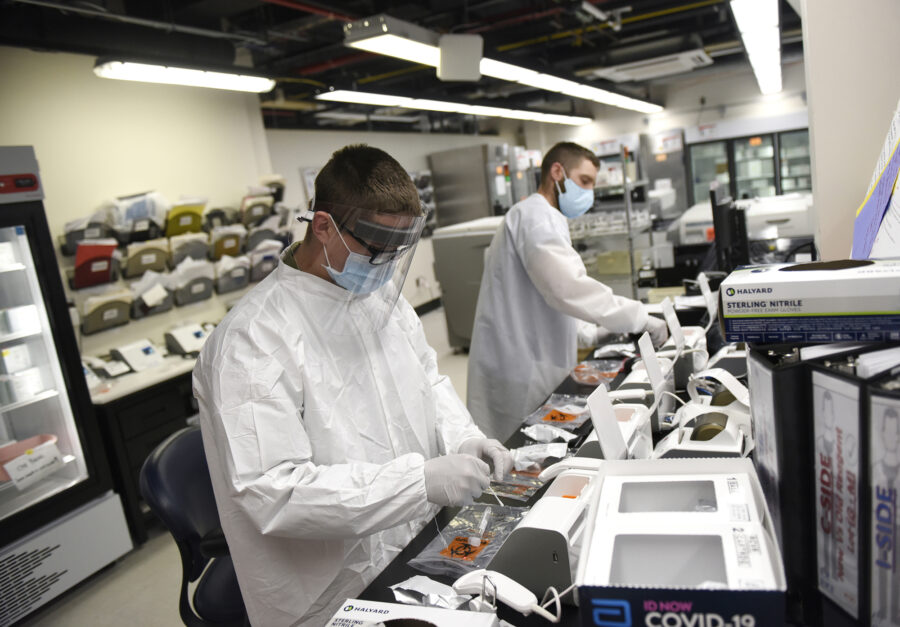
“Typically, before Covid-19, we took at least a year to clean up the data to make sure it was accurate. There was time for data quality,” said Dr. Lilian Peake, Virginia’s state epidemiologist. “[With Covid,] the only choice we had was to develop programming to automatically take the data and send it to our website every day. When you do that, there could be data entry errors.”
For the Utah health agency, the strain of onboarding lab reports to the electronic system was more cumbersome than sifting manually through Excel spreadsheets. Officials in the state said the health agency could not always synthesize Covid-19 results that did not come in electronically during surge periods.
For other health agencies, teaching new labs how to use electronic messaging wasted critical time and exhausted officials.
“It’s time-consuming for us … making sure that the message integrity is intact, making sure that the content is correct,” said Veronica Fialkowski, Vermont’s health surveillance epidemiologist.
With all Covid-19 lab reporting, but particularly with non-electronic reporting, health officials had to “clean” the data. That meant going through what is known as a deduplication process — ensuring a patient is entered into the system only once.
“Oftentimes, when folks are entering into a database, a last name with two words gets separated into two different patient files. And sometimes, it’ll be spelled wrong,” Wyoming’s Van Houten said. “And if I’m hospitalized, I’m repeatedly tested to see if I’m a negative. If those get entered differently each time, then it looks like we’ve got all these new positives when it’s really maybe just one person.”
In New Mexico, officials said, the state health agency was stretched to the limit by cleaning data that arrived as if it had passed through a blender before being shot out in small, fragmented pieces.
“We have never to this date had somebody send us a perfectly configured HL7 message right away,” said New Mexico’s Smelser. “If it is a simple fix — oh, we are putting in an asterisk when it needs to be a numerical value — that isn’t a big deal. When it is adjusting the system at the lab in order to spit out better results — that takes resources that the labs might not have.”
In Vermont, a state of just over 620,000 people that did not experience especially high rates of Covid-19, the public health department nonetheless said it stopped transferring negative results that did not come in electronically. There were simply too many positive lab results flowing in through snail mail, fax and secure email.
“In December 2020 alone, we manually entered over 1,300 results that were faxed or mailed or secure emailed to us. That is a lot for us,” Fialkowski said. “For the negative [case] reporting piece of it, if it’s not electronic, we’re not hand entering negative results into our system. Because no one has the manpower.”
In early February 2020, New York City doctors described patients arriving in emergency rooms complaining of shortness of breath and high fevers, and then dying less than 24 hours later. Covid-19 was still an unstudied virus, and health care workers weren’t sure how to screen for symptoms or diagnose patients. It took weeks to figure out that individuals infected with the virus, particularly those with comorbidities such as obesity, had only a small window to seek treatment before the disease progressed so much that it could kill them.
By that time, it was too late. Covid-19 had spread rapidly throughout the city. By March, hospitals were ordering refrigerated trucks to use as makeshift morgues.
Meanwhile, in the rest of the United States, state health agencies were scrambling to prepare for their own Covid-19 nightmares. Epidemiologists, doctors and nurses vowed to identify Covid-positive individuals, isolate them and treat them, while warning anyone who came into contact with them to isolate themselves immediately. Such contact tracing was seen as the only alternative to massive lockdowns, and for a fleeting moment, they thought they might succeed.
But Covid-19 quickly overran their systems. The result was blanket public health announcements urging people who tested positive to isolate and ask their close contacts to quarantine as well.
“The game plan at that point was to do the best we can do to gather enough information to be representative of the state, and to be able to describe what’s going on without actually having to necessarily talk with everybody,” New Mexico’s Smelser said.
At the CDC in Atlanta, federal officials received daily and weekly reports from state health departments about positive Covid-19 cases, percent positivity and deaths. But they did not have adequate county-level intelligence. Instead, they used anonymous mobility data — cellphone data masked by providers — to understand areas of transmission and potential outbreaks. They also relied on emergency room admission numbers to predict which areas of the country would see a rise in cases. But without timely and meticulous contact tracing, the CDC could not fully appreciate how human behavior impacted the virus’ ability to spread, federal officials said.
State epidemiologists knew they needed massive contact tracing programs to pinpoint potential outbreaks, particularly in congregate settings like nursing homes or restaurants. As cases increased, states either hired contractors or developed their own contract-tracing programs.
But it took states months to build out their contact tracing programs. Local health officials said it was difficult to train volunteers in a short time span and many ended up leaving their posts.
Taylor, for one, relied on his staff of volunteers in the old shopping mall in Oklahoma City to call as many Covid-19 positive individuals as possible.
But for all the resources the Oklahoma state public health department poured into its contact tracing program, the state’s Legislative Office of Fiscal Transparency found that the program “had no measurable impact,” according to a March report.
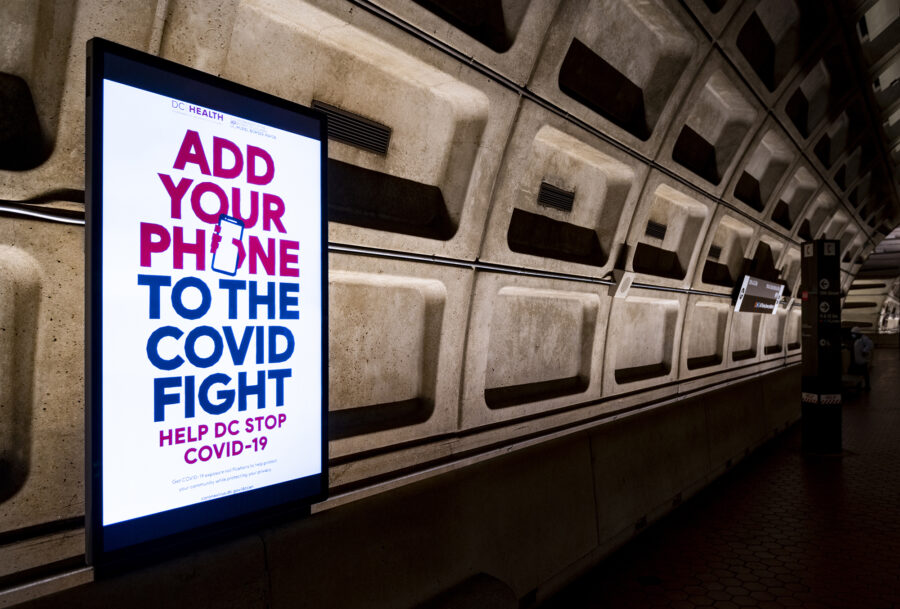
The failure of contact tracing left the state unable to make data-based decisions on when to close facilities.
“A lot of that crucial data could have potentially been collected and it might have been really helpful for policy decisions,” said Rogers, Tulsa’s division chief of data and technology. “There’s a few examples of that … where we were asking should or should we not have, like, a gym close, or is it safe to have them open? We can’t answer that question to advise policy, if we don’t have really robust data to back those decisions.”
Officials from dozens of states said failure to coordinate their own data systems prevented them from properly investigating outbreaks stemming from certain restaurants, prisons and bars.
If, for instance, a waitress from Jackson Hole tested positive, her lab result would eventually land with the state health department. Contact tracers would then reach out to her in hopes of determining her occupation and whether others in her same place of work had come down with symptoms. But in dozens of states, the waitress’ answers to the initial case investigation questions would not be automatically transferred into a system that allowed health officials to understand whether the restaurant had become a Covid-19 hot spot.
Many state outbreak management systems run separately from case investigation systems. The case investigation program has the ability to track one individual and record their Covid-19 status. Many outbreak management programs are designed to allow contact tracers and health officials to build out a profile of a specific facility, track transmission among a group of individuals and plug in patient details as more individuals associated with that facility become sick.
But because patient data does not always automatically upload into the outbreak management system from the original case surveillance program, health officials are forced to manually reenter information and use additional documents, such as spreadsheets, to supplement their investigation. That leads to gaps in understanding how the virus spread through certain communities, officials said.
“For outbreak facility management, we don’t have a very good tool right now,” Fialkowski, Vermont’s health surveillance epidemiologist, said.
“Finding the actual true source of infection became more and more difficult,” Wyoming’s Van Houten added. “Early on, we were able to pretty much pinpoint and say this is where the person’s been … we follow up, we see there’s a couple of other sick people there and we get them tested. But as the virus became more widespread, it was hard to do that. People were in multiple situations and every situation you’d look at there were other sick people.”
Another problem was identifying Covid-positive individuals from out of state who contracted the virus while visiting friends and family. Some states have systems that share information with one another, but many others do not. For example, if someone from New York tested positive in Vermont, Vermont’s health department would have to contact New York’s to alert them. And if someone from Vermont contracted the virus while in Connecticut, the Connecticut public health department would have to alert Vermont’s.
“Having a more fleshed-out, robust contact tracing system in place that states can use across the borders … would be beneficial,” said Arkansas’ Cima. “Because at the end of the day, when you don’t have medical countermeasures, and distance and isolation and quarantine are your number one public health interventions, you have to invest in that and make sure that that’s going to be your best bet for keeping people from getting sick.”
This spring, as new Covid-19 cases began to decrease and vaccination rates rose, public health officials across the country began to relax. The end of the pandemic seemed finally in sight.
For many state health departments, that brought a sense of pride — they had managed to get through the worst health crisis in memory even though their resources often seemed desperately inadequate. They had soldiered on despite the decades of neglect in the country’s public health defenses.
Not a single health official who spoke to POLITICO said their agency had been equipped to handle a pandemic like this one. But by rigging fixes to arcane data systems, bringing on volunteers and pulling 15- to 18-hour days for more than a year, they’d helped save lives.
“I think we encourage our employees to take weekends to take time away, but it’s hard,” Dr. Melissa Sutton, senior health advisor for Oregon’s pandemic response, said in April. “This is very intense work, and we’re all super-invested in the outcomes. But that can be dangerous as well. I think we are heading into another surge. I predict that some of the same things that happened before will happen again.”
She was right.
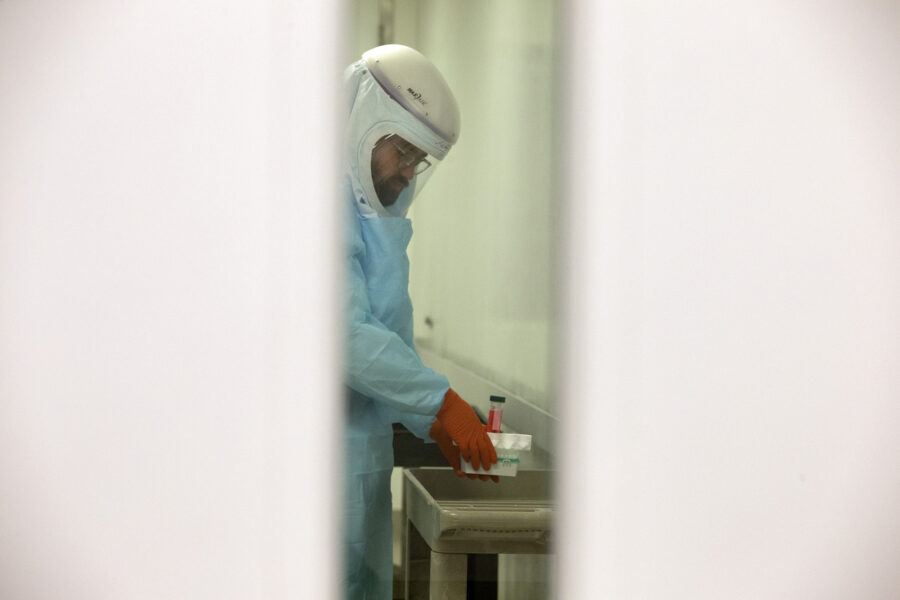
Doctors, nurses and other health care workers described a deep sense of anger and frustration that the wealthiest country in the world remains so ill-prepared. The U.S. public health system was once seen as the global standard. The pandemic revealed how decades of neglect left it to slowly rot.
“My concern is that unless you have the case investigators with an information system that allows them to accurately, quickly and flexibly collect information and use it well, all of that information will be problematic,” said Frieden, the former CDC director. “That’s why my fundamental point is that we need to fix the base of what the local health department uses to collect information because if we don’t do that, all of the other things that we collect are going to be inaccurate.”
The CDC was starting to think about fixes just before the pandemic hit, in 2019, when it launched its Public Health Data Modernization Initiative. The program is supposed to help state and local public health departments upgrade their systems. The CDC also wants to speed up lab reporting and ensure that tests results are accompanied by complete and accurate demographic data. Congress has allocated $500 million from the Coronavirus Aid, Relief, and Economic Security (CARES) Act, specifically for the data initiative.
The program supplements funding the CDC was already sending to states through an existing program, founded in 1995, that focuses on fighting infectious diseases.
Over the past year and a half, state and local officials have spoken with the CDC about the limitations of their systems and the need for a national approach to tracking outbreaks.
“We need to get those data exchanges between health care and public health, laboratories and public health and local health departments to the CDC as electronic … as possible,” said Yoon, the CDC’s director of the division of health informatics and surveillance.
While state officials say they are relieved the CDC has recognized the need for data modernization, they feel the cash infusion was just a drop in the bucket. On May 28, President Joe Biden asked Congress to appropriate $9.6 billion to the CDC, a 22 percent increase. That includes $400 million for bolstering public health infrastructure broadly and $100 million for data modernization.
Even as public health departments start to focus on the future, they acknowledge that the problems that thwarted them in 2020 still exist today. Without immediate and widespread improvements, the U.S. is at risk of facing the same issues with surveillance, containment and outbreak management this year as it did over the course of the last year.
“This was a big failure of effective tracking of the pandemic by nearly all, if not all, states, despite really hard work by really smart people,” Frieden said. “It’s not going to be easy to fix.”
With the emergence of new, more transmissible variants, that possibility is becoming more real. As the latest surge began this summer, officials said they felt exhausted — overworked and in many cases underpaid. And their staff had fled. A slew of health agencies said their offices are hollowed-out versions of their former selves, as dozens of officials, including lead epidemiologists, have left their posts.
“We’re unfortunately now facing variants — and we’re facing a public that is just tired of Covid and following the rule,” said Dean Sidelinger, the state epidemiologist for the Oregon Public Health Division. “Just when things look a little better, another surge, another curveball comes in. There’s only so much we can add to the workforce to make sure that we’re managing this all well.”
Go To Source
Author: POLITICO

